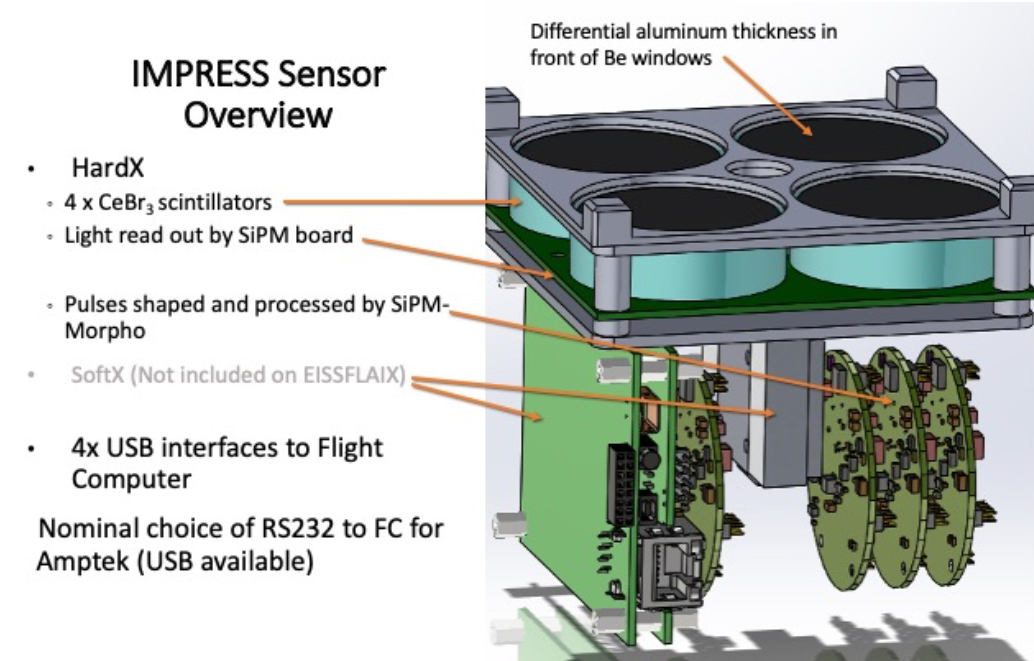EPSCoR ISS Solar Flare Acceleration Investigation through X-rays
2022 ISS award, PI Dave Klumpar
The EPSCoR ISS Solar Flare Acceleration Investigation through X-rays (EISSFLAIX (pronounced
‘ice flakes’)) investigation is a transformative mission to reveal intricate morphology
of solar flare acceleration at high spectral resolution and at unprecedented spatiotemporal
scales by deploying a high-cadence, high-sensitivity, dedicated full-sun hard X-ray
(HXR) burst detector on International Space Station (ISS). Montana State University
(MSU) will build and deliver the scientific instrument that will reveal fast temporal
variations in solar hard X-ray flux over a period of 12-months near the maximum of
Solar Cycle 25 at an unprecedented cadence revealing fine-scale details of solar particle
acceleration during solar flares. The instrument operates for 1-year on ISS returning
a treasure trove of high time resolution HXR bursts on hundreds of solar flares ranging
from GOES C- to X-Class. When
combined with simultaneous high-resolution imaging observations of the solar transition
region/upper chromosphere in optical or ultraviolet passbands obtained by space- or
grounded-based telescopes like (IRIS) and (DKIST) the EISSFLAIX investigation will
provide crucial information of the spatial structure and magnetic environment of HXR
spikes, and lead to progress in understanding properties of source regions and acceleration
mechanisms of non-thermal electrons. EISSFLAIX observations and metadata is to be
made available through the Virtual Solar Observatory, an element of NASA Open Data
Portal. Results will be published in the open
scientific literature.
Contact Info
|
|

